departmentofenergy
Latest

Stanford's new lab could make particle accelerators 1,000 times smaller
Particle accelerators have proven vital to understanding subatomic physics, but current technology tends to make them... rather large. And Stanford is determined to address that. SLAC has started assembling a new location, FACET-II (Facility for Advanced Accelerator Experimental Tests), that could lead to accelerators 100 to 1,000 times smaller than you see today. The facility will produce ultra-high quality electron beams that should help develop new, more size- and cost-effective plasma acceleration techniques.

The US again has the world's most powerful supercomputer
The Department of Energy pulled back the curtain on the world's most powerful supercomputer Friday. When Summit is operating at max capacity, it can run at 200 petaflops -- that's 200 quadrillion calculations per second. That smokes the previous record holder, China's Sunway TaihuLight (which has a 93 petaflop capacity). Summit is also about seven times faster than Titan, the previous US record holder which is housed at the same Oak Ridge National Lab in Tennessee. For perspective, in one hour, Summit can solve a problem that it would take a desktop computer 30 years to crack.
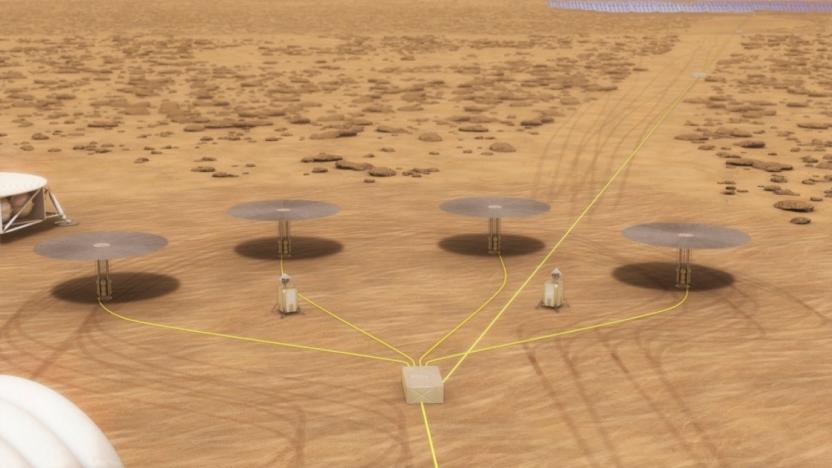
NASA completes full-power tests of small, portable nuclear reactor
Being able to generate power will be essential for long-term space travel. Powering a stay on Mars, for example, will require a lot of fuel, way more than we can pack onto a rocket. That's why NASA, Los Alamos National Laboratory, the Department of Energy and a number of other groups have been working on a small, transportable nuclear reactor that can reliably generate power on the go. The reactor they're developing is called Kilopower and earlier this year, they announced that they had conducted successful tests of the system. In March, the team ran the first full-power tests and during a press conference today, they reported that those tests went extremely well.
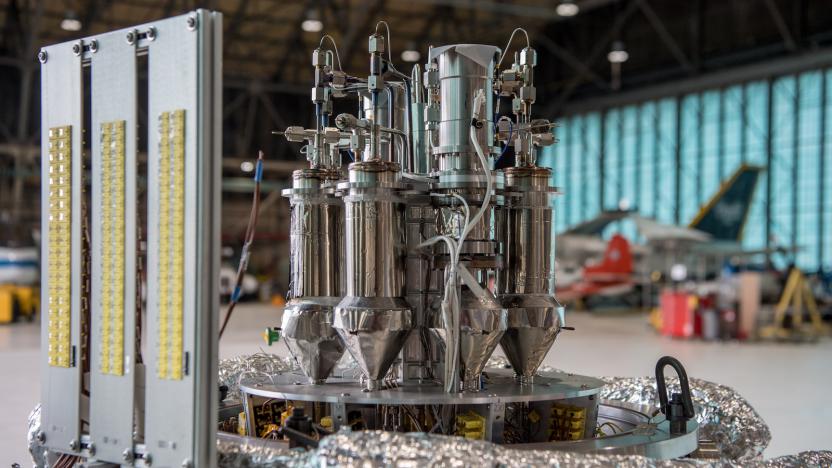
NASA tests small nuclear reactor that could power a habitat on Mars
Everyone from Elon Musk to Donald Trump wants to send a crewed mission to Mars in the not too distant future, but there are quite a few problems that need to be solved before we can achieve that goal. A major one is the issue of energy. Long-term stays on Mars, or anywhere else for that matter, will require lots of energy, as will the trip back to Earth. However, loading a rocket up with all of the necessary fuel won't work -- we would need too much. So a way to create fuel on the go is a must and researchers at NASA, Los Alamos National Laboratory and the Department of Energy announced today that they've conducted successful tests of a system that can do just that.

US Senate and Navy computers tied to revenge porn site
The Daily Beast reports today that a number of users of revenge porn site Anon-IB appear to be connecting from government computers. Einar Otto Stangvik, a security analyst with Norway's VG newspaper, was able to pull IP addresses from the website and they showed that a number of Anon-IB commenters and posters were logging on through IP addresses belonging to the US Navy, the US Senate, the Department of Energy and the Executive Office of the President.

FAA names seven nuclear research labs as no-drone zones
The FAA has granted DOE's request to make seven of its facilities no-drone zones -- and they're all nuclear research laboratories. Starting on December 29th, you can no longer fly your UAVs within 400 feet of Hanford Site in Franklin County Washington, Pantex Site in Panhandle Texas, Los Alamos National Laboratory in New Mexico, Idaho National Laboratory, Savannah River National Laboratory in Aiken South Carolina, Y-12 National Security Site in Oak Ridge Tennessee and Oak Ridge National Laboratory. Some of them are no longer operational -- the Hanford site where plutonium was produced for the nuclear bomb detonated over Nagasaki, for instance, is now mostly decommissioned -- but some are still active.

Researchers look deeply within batteries to see why they explode
High-energy batteries, like the ones in your laptop and smartphone, can fail, which can cause them to overheat and even catch fire. A team of researchers used cryo-electron microscopy (cryo-EM) , a technique that won the 2017 Nobel Prize in chemistry, to capture high-resolution, atomic-level images finger-like growths in these devices called dendrites. The new images will give scientists a better idea of what causes high-energy batteries to overheat, which could lead to safer devices for all of us.

US funds tech giants' efforts to build next-gen supercomputers
The US government is giving six companies a total of $258 million in hopes that they can build an exascale supercomputer before China, Japan or anyone else does. A post on the Exascale Computing Project website has revealed that the Department of Energy has awarded AMD, Cray, Hewlett-Packard Enterprise (HPE), IBM, Intel and Nvidia $258 million in funding over a three-year period. The six corporations won't depend solely on the government's money, though -- to show that they're also fully invested in the project, they'll cover 40 percent of the total costs that could amount to least $430 million.

Researchers create hydrogen fuel with artificial photosynthesis
Scientists all over the world have been attempting to recreate photosynthesis in the lab in hopes of being able to mimic the process to create fuel. Now a team of researchers from the Department of Energy's (DOE) Brookhaven National Laboratory and Virginia Tech have figured out the secret behind a man-made molecular system or a "supramolecule" that can do the job well. Their lead researcher originally created two supramolecules a few years ago. Both of them can perform the processes needed for photosynthesis to occur: absorbing light, separating and transporting electrical charge and catalyzing the reactions needed to produce hydrogen that plants use to turn carbon dioxide into glucose. However, one was more effective than the other, so the team performed experiments to figure out why.

What Trump's budget would mean for NASA and climate change
President Donald Trump's proposed 2018 budget beefs up the Defense Department while removing funds from the Environmental Protection Agency, Department of Energy, NASA and many other government agencies. Congress still has to pass the budget, but if it's approved it will shut down a handful of programs designed to research and combat climate change. Despite overwhelming consensus in the scientific community, multiple members of the Trump administration have argued that climate change is not a man-made occurrence, including new EPA head Scott Pruitt. So, it's not surprising that Trump's proposed budget slashes climate change research programs and funding -- but it is concerning.
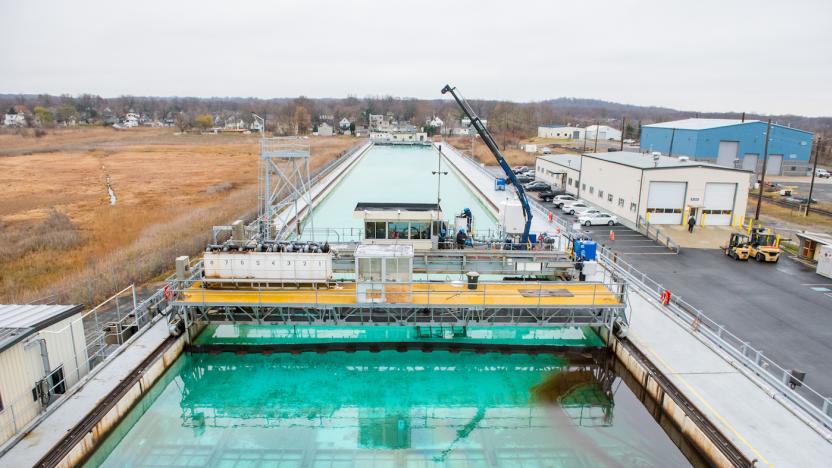
'Oleo Sponge' may be the key to cleaning up after oil spills
Cleaning up after an oil spill isn't an easy job. Just ask Exxon Mobil, or, for a more recent example, BP. Current clean-up methods include skimming it of a body off water's surface or burning it. Neither are ideal for a few reasons, but beyond impacting the environment even further, they don't account for the sludge that's trapped below the waves. That's where the Department of Energy's Oleo Sponge comes in.

Who is Jerry Falwell Jr. and why is he reforming higher education?
Donald Trump has already earned his reputation of nominating candidates for his cabinet-level positions who face stiff opposition from the science and tech community. He's given the nod to former Texas Governor Rick Perry, who once called on Congress to abolish the Department of Energy that he now heads, and EPA nominee Scott Pruitt, who, as Oklahoma attorney general, sued the EPA no fewer than 14 times. On Tuesday, Trump continued this streak by tapping Jerry Falwell Jr. to head up a presidential task force charged with suggesting reforms for the Department of Education.

Rick Perry didn't understand the role of the Department of Energy
Rick Perry, former Governor of Texas, could become the United States' next energy secretary. However, according to a New York Times report, Perry believed the role would help him champion the country's oil and gas industry — which he has experience with during his time as governor. In fact, the job specification (and the majority of the department's budget) actually centers on the nation's $20 billion nuclear stockpile and overseeing national laboratories that form a major part of the government's science remit. If approved, Perry has incredibly stiff learning curve ahead of him, encompassing nuclear management, science and technology investment.

Scientists copy climate change data in fear of a Trump crackdown
Donald Trump's incoming presidency won't be kind to climate change science, and that's making both scientists and government divisions nervous -- to the point where they're taking unusually drastic actions. Researchers at multiple North American institutions, including the Universities of Pennsylvania and Toronto (as part of the Internet Archive's Trump response), are hoping to save as much public environmental data as possible in case the Trump administration orders its removal. There's also an independent Climate Mirror project that aims to copy public data before Trump takes office in January.

X-ray laser spots photosynthesis in real-life conditions
Humanity has known about the life-giving photosynthesis process for a long time, but studying it in real-world conditions has often been impractical. You've typically had to freeze samples to get a good look, which isn't exactly natural. However, the SLAC National Accelerator Laboratory just managed a breakthrough: it used its x-ray laser to capture detailed snapshots of photosynthesis at room temperature. The trick was to place protein complex samples in a solution, put that on a conveyor belt, light it up with a green laser (to start the water-splitting reaction) and capture images using x-ray pulses. As those pulses are extremely fast -- just 40 femtoseconds long -- you can collect crystallization and spectroscopy data before the sample meets its untimely end.

NVIDIA helps the US build an AI for cancer research
Microsoft isn't the only big-name tech company using AI to fight cancer. NVIDIA is partnering with the US Department of Energy and the National Cancer Institute to develop CANDLE (Cancer Distributed Learning Environment), an AI-based "common discovery platform" that aims for 10 times faster cancer research on modern supercomputers with graphics processors. The hardware promises to rapidly accelerate neural networks that can both spot crucial data and speed up simulations.
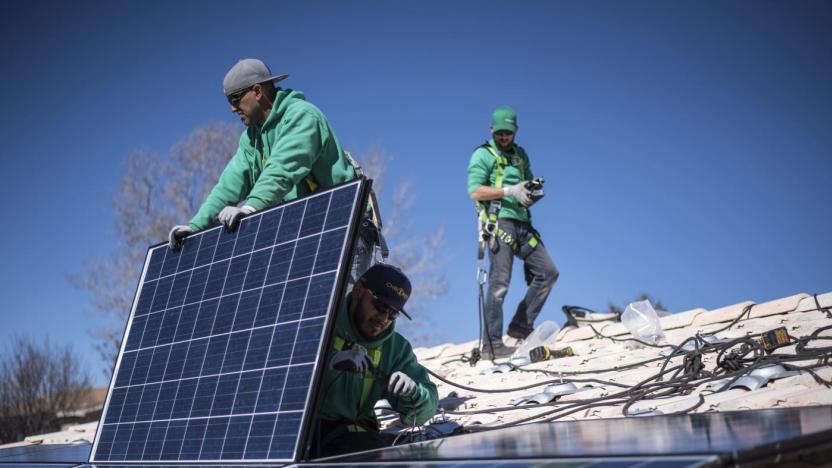
The Energy Department just started its own podcast
You normally don't think of government agencies embracing podcasts -- even if tight budgets aren't a problem, creativity isn't usually their top priority. The US Department of Energy wants to buck that trend, though. It just started up a podcast, Direct Current, that delves into energy technology, government initiatives and energy history. The first episode touches on the problems surrounding the "soft costs" of solar power, solar technology's milestones and the history of the Energy Department itself.
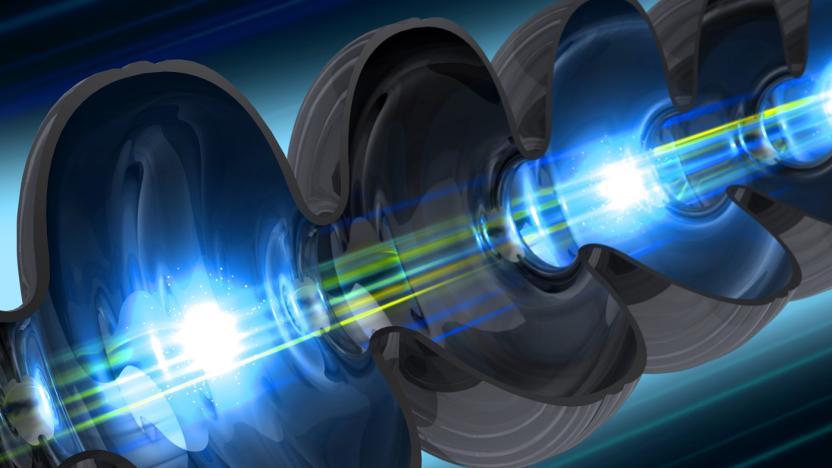
World's most powerful X-ray laser will get 10,000 times brighter
If you think that Stanford's use of an super-bright X-ray laser to study the atom-level world is impressive, you're in for a treat. The school and its partners have started work on an upgrade, LCLS-II (Linac Coherent Light Source II), whose second laser beam will typically be 10,000 times brighter and 8,000 times faster than the first -- up to a million pulses per second. The feat will require an extremely cold (-456F), niobium-based superconducting accelerator cavity that conducts electricity with zero losses. In contrast, the original laser shoots through room-temperature copper at a relatively pedestrian 120 pulses per second.

Gamma ray map offers best view yet of our galaxy's energy
Space is full of gamma rays and other intense forms of energy, but you've only ever had a partial picture of it. Ground-based telescopes can only see so much, and even the Fermi space telescope (designed to catch these energies) has missed out on a lot of it... until now, that is. NASA has posted a much more complete gamma ray map using 6 years' worth of refined Fermi data. The result is a far more detailed and comprehensive view of the energy 'bright spots' (between 50 billion to 2 trillion electron volts) in the Milky Way galaxy and beyond. The pretty picture you see above includes the leftovers of supernovae, pulsar wind nebulae and even galaxies whose supermassive black holes make them detectable from millions of light years away.

Scientists map high-temp superconductivity in 3D for the first time
High-temperature superconductivity represents a potential breakthrough across multiple fields of technology, from MRIs to levitating trains, hoverboards and computing. Scientists at the Department of Energy's SLAC National Accelerator Laboratory have discovered the first 3D model of the elements involved in high-temperature superconductivity, uncovered using powerful magnetic pulses and "some of the brightest X-rays on the planet," according to a press release. Superconductivity is a quantum mechanical phenomenon that occurs in certain materials when they're cooled to extreme temperatures, at which point they conduct zero electrical resistance and expel their magnetic fields. If humans can harness superconductivity at room temperature, the technology could take off in a massive way (Did someone say singularity?).








